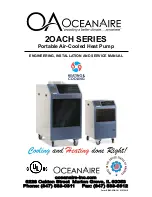
20/68
About this product
Bosch Rexroth AG
, A4CSG, Series 3x, RE 92105-01-B/06.2017
5.2.2 Functional description
Torque and rotational speed are applied to the drive shaft (
1
) by a drive motor. The
drive shaft is connected by splines to the cylinder (
11
) to set this in motion. With
every revolution, the pistons (
12
) execute a stroke in the cylinder bores, the size of
which depends on the pitch of the cradle (
14
). The slipper pads (
13
) are held on
with the pistons and guided along the glide surface of the cradle by the retaining
plate (
3
). The pitch of the swashplate during a rotation causes each piston to move
over the bottom and top dead centers and back to its initial position. Here, hydraulic
fluid is fed in and drained out through the two control slots in the control plate (
6
)
according to the stroke displacement. On the high-pressure side (
7
) the hydraulic
fluid is pushed out of the cylinder chamber and into the hydraulic system by the
pistons. At the same time, hydraulic fluid flows into the growing piston chamber on
the low-pressure side (
9
). In a closed circuit, supported by the return flow and boost
pressure.
The swivel angle of the cradle (
14
) is infinitely variable. Controlling the swashplate
swivel angle changes the piston stroke and, therefore, the displacement. Controlling
the swashplate through the neutral position will change the direction of flow (making
reversing operation possible). The swivel angle is controlled hydraulically via the
stroke piston (
4
). The cradle is mounted in swivel bearings for easy motion and the
neutral position is spring-centered. Increasing the swivel angle increases the
displacement; reducing the angle results in a corresponding reduction in
displacement.
Various control devices are available depending on requirements. Information
about this can be found in data sheet 92105.
Pump
Control
















































